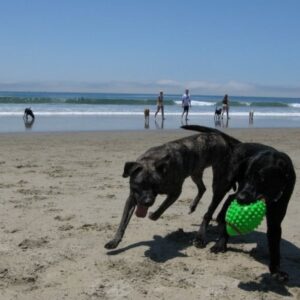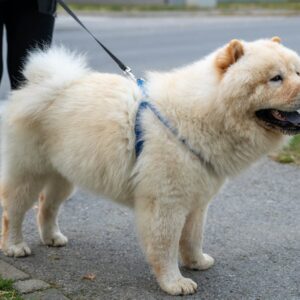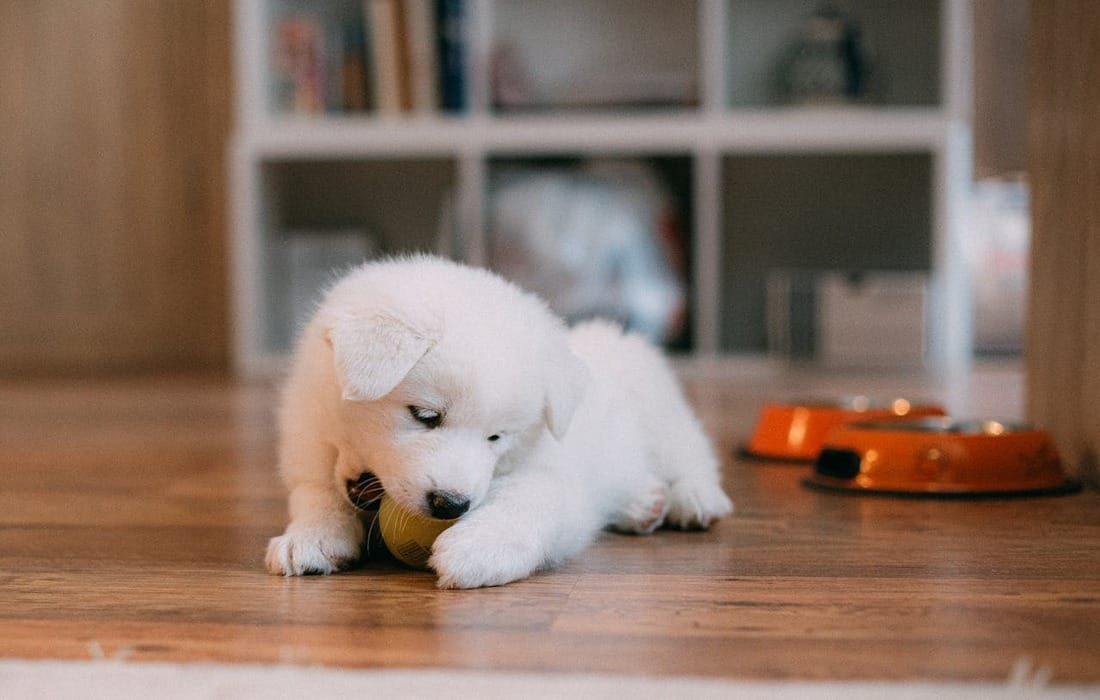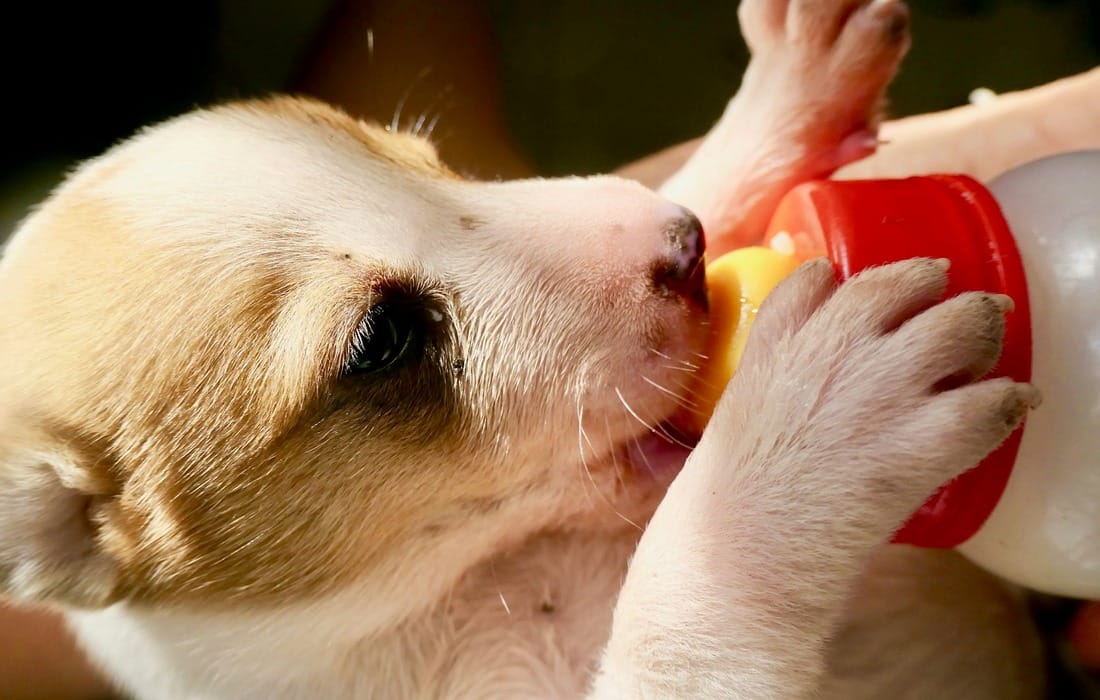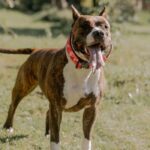Loyal, imposing, and deeply protective, the Anatolian Shepherd Dog isn’t just any canine—it’s a living legacy of over 6,000 years of livestock guarding. Hailing from the rugged landscapes of Turkey, this breed was built to fend off predators like wolves and bears, combining strength with watchful intelligence. Whether you’re curious about their suited environments, training challenges, or family compatibility, this guide will help you decide if the Anatolian Shepherd is the right dog for your life.
History of the Anatolian Shepherd Dog
The Anatolian Shepherd Dog is more than just a loyal companion—this breed is a living testament to humanity’s long-standing relationship with working dogs. Renowned for its keen instincts and protective nature, its journey from the ancient hills of Turkey to backyards and ranches across the globe is a story worth telling.
Origins and Development
The Anatolian Shepherd Dog is one of the oldest dog breeds, with roots tracing back over 6,000 years. Its ancestors were likely large mastiff-type dogs that accompanied nomadic tribes in Asia Minor (modern-day Turkey). These early dogs were bred for one reason: guarding livestock.
Life on rugged terrains demanded a dog that could protect sheep and goats from formidable predators like wolves, bears, and even leopards. This role shaped the breed into what it is today—a fearless and intelligent protector. Unlike herding breeds that move livestock, the Anatolian Shepherd acts as a vigilant guardian, staying with its flock and exhibiting unwavering loyalty.
Many experts believe these dogs descended from the Tibetan Mastiff, and archaeological studies suggest their lineage spread through the Babylonian and Assyrian empires. They were celebrated for their ability to handle challenging environments, making them indispensable for shepherds.
For more details on this breed’s fascinating past, you can explore the Anatolian Shepherd Dog history page on the AKC’s website.
Introduction to the United States
The Anatolian Shepherd Dog made its first appearance in the United States in the late 1930s, thanks to a Department of Agriculture experiment. The government sought a breed that could safeguard livestock against predators, particularly during a time when livestock losses posed a significant economic challenge.
This “test run” involved importing breeding pairs directly from Turkey. However, the breed didn’t gain widespread recognition until the 1950s and 1960s, when American ranchers realized the Anatolian Shepherd’s potential as a working dog. By the 1980s, the breed’s popularity surged, largely due to its unique combination of strength, independence, and adaptability to American climates.
Today, the Anatolian Shepherd has a respected presence both as a working dog and a loyal family companion, especially for those living in rural areas. To learn more about their journey to America, check out Anatolian Shepherd Dog
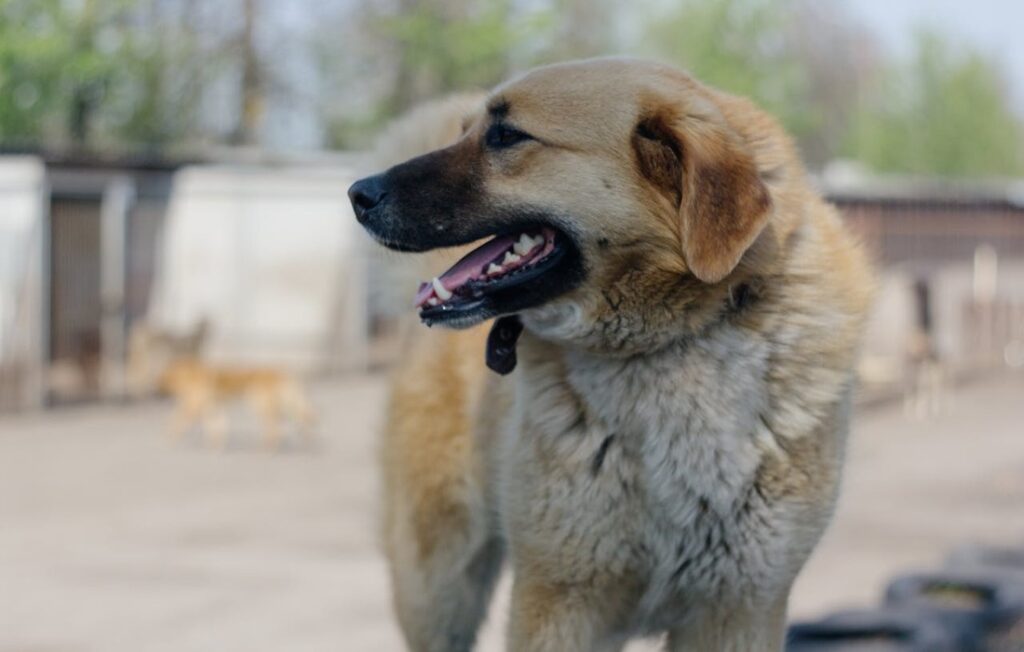

The breed’s history is a testament to its timeless utility and unmatched dedication to protecting those it serves, making it truly one of the most iconic livestock guardian dogs in the world.
Physical Characteristics
The Anatolian Shepherd Dog stands out with its commanding presence, built to excel as a livestock guardian. This breed is both imposing and elegant—a true combination of power and grace. Below, we’ll dive into the key physical attributes that define this sturdy yet noble dog.
Size and Weight
One of the most noticeable traits of the Anatolian Shepherd is its size. These dogs are large and muscular, designed for endurance and strength rather than speed. Their size is part of their effectiveness in intimidating predators like wolves and bears.
- Male Anatolian Shepherds
- Height: Ranges between 29 to 31 inches at the shoulder.
- Weight: Typically between 110 to 150 pounds.
- Female Anatolian Shepherds
- Height: Slightly shorter, standing between 27 to 29 inches.
- Weight: Generally weighs in at around 90 to 130 pounds.
While these measurements are averages, individual dogs may vary, especially depending on diet and exercise. Despite their large size, Anatolians are surprisingly agile—proof of their evolutionary design as working guardians. According to AKC’s official page, their muscular build doesn’t detract from their efficiency and speed in guarding herds.
Coat and Colors
The Anatolian Shepherd boasts a double-layered coat that’s as functional as it is beautiful. This coat protects the dog in extreme weather conditions, from the scorching sun to freezing winters. The outer coat is coarse and somewhat weather-resistant, while the undercoat provides additional insulation.
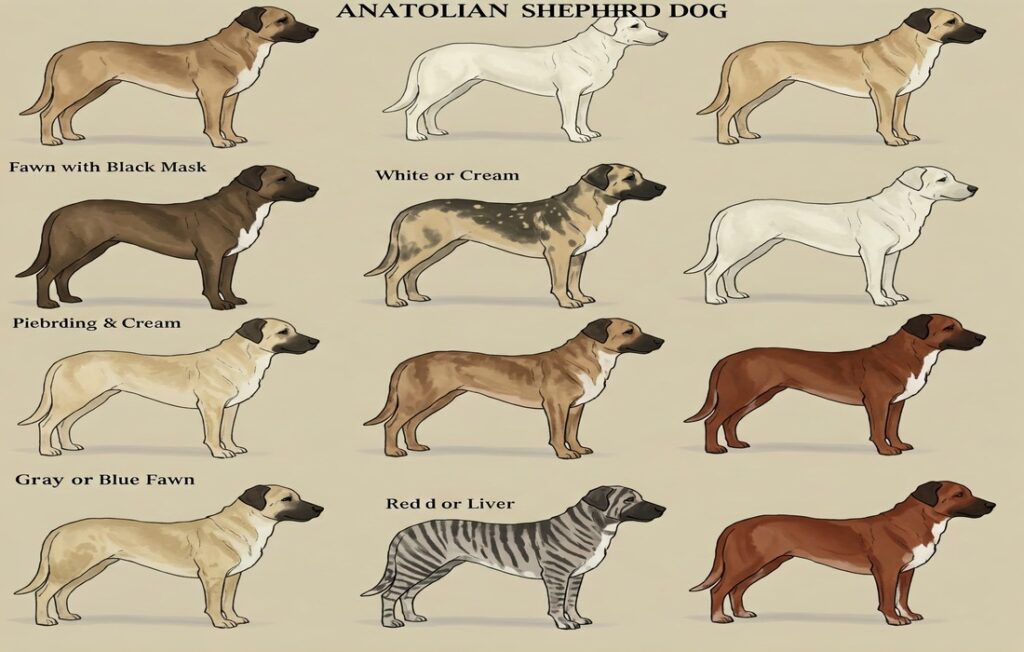

These coats come in a variety of colors, giving the breed a diverse appearance while maintaining its recognizable look:
- Fawn with Black Mask (one of the most iconic appearances)
- White or Cream
- Piebald (white base coat with large patches of color)
- Brindle (striped pattern on a base coat)
- Gray or Blue Fawn
- Red or Liver
Each of these color variations often matches the needs of the breed’s original environment—blending in with livestock and natural surroundings for camouflage.
One thing to keep in mind is that their coats require regular maintenance, especially during shedding seasons. With their thick double coat, Anatolian Shepherds can shed quite a bit, particularly during the spring and fall. This breed’s coat is as practical as a heavy-duty winter jacket, but like a jacket, it requires cleaning and care to keep it in tip-top shape. DogTime’s profile provides more insights into the breed’s seasonal coat care.
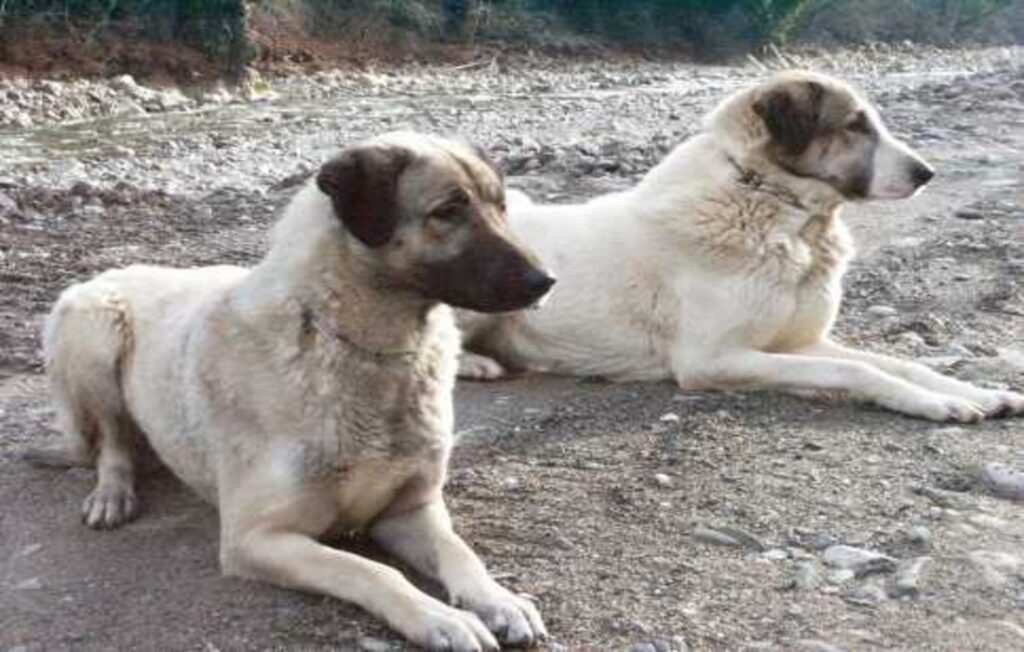

These physical characteristics not only make the Anatolian Shepherd strikingly beautiful but also functional and resilient, built for their role as one of the world’s finest livestock guardians.
Temperament
The Anatolian Shepherd Dog is renowned for its temperament, characterized by a mix of independence, intelligence, and unwavering loyalty. These traits stem from its ancient role as a livestock guardian, making it a reliable protector and a steadfast companion. Understanding their temperament is essential for anyone considering this breed, as their unique nature requires specific handling and care.
Protective Instincts
The Anatolian Shepherd is naturally protective, a result of centuries guarding livestock in harsh environments. Their instinct to shield and defend isn’t limited to sheep or goats—it extends to their human families too. This breed is particularly suited for families who value security since Anatolians are vigilant and perceptive, always alert to potential threats.
What sets them apart is their ability to assess situations before acting. They won’t bark or charge unnecessarily but will act decisively if they sense danger. This makes them excellent for rural environments or homes with large properties. Families can rest easy knowing their Anatolian is quietly keeping watch.
That said, their protective nature doesn’t mean they’re aggressive. They’re not attack dogs—rather, they are guardians. They will defend but without unnecessary force. Proper training can help hone this instinct, ensuring it’s balanced with obedience. For more on their innate guarding stance, check out Anatolian Shepherd Dog Breed Information.
Socialization Needs
Early and proper socialization is non-negotiable for Anatolian Shepherds. While their independence and intelligence serve them well as guardians, it also means they can develop unwelcome behaviors if not socialized appropriately. These dogs have a natural wariness of strangers—it’s part of their protective charm—but without exposure to different environments, people, and situations, this can turn into anxiety or over-aggressiveness.
Socializing your Anatolian from a young age will help them differentiate between real threats and ordinary occurrences. Start with controlled environments like puppy classes, then gradually expose them to busier places like parks or community settings. Regular interaction with other dogs is vital too, as Anatolians are naturally dominant and need to learn how to coexist peacefully with other animals.
Here are some tips to ensure effective socialization:
- Organize playdates with other dogs.
- Take them to pet-friendly stores or outdoor cafes.
- Encourage interaction with friends and family visitors.
- Use positive reinforcement when they respond calmly to new environments.
In short, a well-socialized Anatolian Shepherd is calmer, friendlier, and more adaptable, making them much easier companions. For additional advice on early training and socialization, resources like the ASDCA Education Page offer valuable guidance.
Care Needs
Caring for an Anatolian Shepherd Dog requires understanding their unique physical and mental needs. From staying active to maintaining a healthy diet, these dogs thrive when provided with proper attention and care. Here’s a breakdown of their exercise, grooming, and dietary requirements.
Exercise Requirements
Anatolian Shepherds are working dogs at heart with energy levels tailored to their role as diligent livestock guardians. Despite their calm demeanor, they need consistent, structured physical activities to stay fit and mentally balanced.
- Daily Activity: Aim for at least 60 to 90 minutes of exercise every day. This doesn’t mean overly intense workouts, but a mix of walks, play sessions, and “work-like” tasks that engage their intelligence.
- Mental Stimulation: As highly intelligent dogs, they excel when given puzzles, problem-solving activities, or even commands to “guard” designated areas of your home or yard.
- Space to Roam: These dogs aren’t meant for cramped apartments. A large backyard, preferably with secure fencing, allows them the freedom they crave.
Without sufficient physical and mental stimulation, an Anatolian Shepherd may channel their energy into behaviors like digging or excessive barking. For more exercise tips, visit Puppy List’s Guide to Anatolian Shepherd Needs.
Grooming and Shedding
Anatolian Shepherd Dogs boast a double-layered coat designed to keep them comfortable in both hot summers and freezing winters. This coat, however, requires regular upkeep to maintain its health and appearance.
- Shedding: They experience moderate shedding throughout the year, with heavy seasonal shedding during spring and fall.
- Brushing Routine: Brush them at least once a week using a slicker or pin brush. During shedding seasons, daily brushing might be necessary to manage their undercoat.
- Bathing: These dogs don’t require frequent baths—every 6 to 8 weeks is sufficient unless they get particularly dirty. Use a shampoo formulated for double-coated breeds to maintain their natural oils.
Regular grooming isn’t just about aesthetics—it’s an opportunity to check for any skin issues, ticks, or signs of irritation. Learn more from the Anatolian Shepherd Grooming Guide.
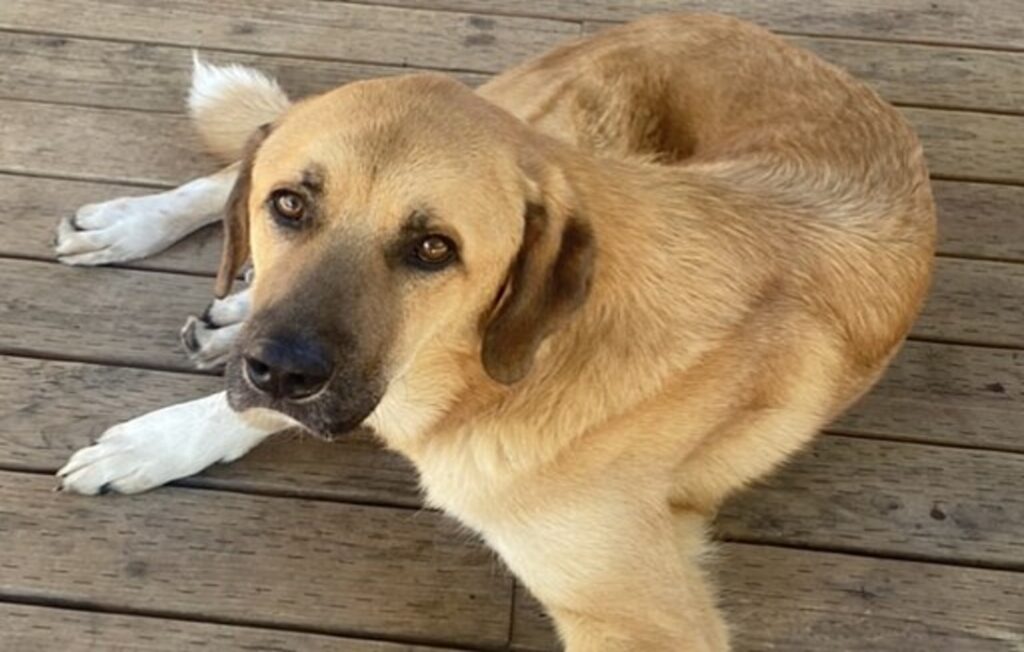

Dietary Needs
Anatolian Shepherd Dogs have unique dietary needs due to their large size and active nature. Providing a well-balanced and nutritionally complete diet is essential for their overall health.
- High-Quality Kibble: Choose dog food formulated for large breeds with balanced protein and fat levels.
- Portion Control: Overfeeding can lead to obesity, which increases the risk of joint issues. Monitor portions carefully based on their activity level and age.
- Supplements: Large breeds may benefit from supplements like glucosamine for joint health and Omega-3 fatty acids for coat health.
- Water Intake: Always ensure they have access to fresh water, especially after exercise and during warmer months.
Consult with your veterinarian to tailor your Anatolian Shepherd’s diet to their specific needs. For more guidance, check out the Anatolian Shepherd Care Guide on PetMD.
With the right care in these three areas, your Anatolian Shepherd will thrive both mentally and physically, adapting beautifully to their environment while maintaining the robust health they’re known for.
Health Issues
Like all dog breeds, Anatolian Shepherds are predisposed to certain health challenges. Understanding these potential issues and taking steps to address them can make a world of difference in your dog’s quality of life. Let’s dive into some of the most common ailments and explore preventive care practices that every Anatolian Shepherd owner should know.
Common Ailments
Anatolian Shepherds are typically robust and healthy dogs, but they are not immune to health issues. Here are a few of the most common problems they may face:
- Entropion: This is a condition where the eyelid rolls inward, causing the eyelashes to irritate the eye. Over time, this can lead to discomfort, corneal damage, or even vision loss if untreated. Regular eye checks during routine vet visits are crucial for early detection.
- Hip and Elbow Dysplasia: Large breeds like Anatolians are prone to joint issues, including hip and elbow dysplasia. This hereditary condition can cause arthritis and mobility problems as the dog ages. Maintaining a healthy weight and providing joint supplements as needed can help alleviate symptoms.
- Gastric Dilatation-Volvulus (Bloat): Anatolian Shepherds are deep-chested dogs, making them susceptible to bloat. This life-threatening condition occurs when the stomach twists, cutting off blood flow. Always monitor your dog after meals, avoid feeding them right before exercise, and know the signs of bloat, like restlessness or retching.
- Ear Infections: Their thick coats and floppy ears can make them more prone to ear infections. Moisture and debris can get trapped inside, leading to bacterial growth. Regular cleaning and inspection can prevent complications.
- Sensitivity to Anesthesia: Anatolians may have a higher sensitivity to certain anesthetics due to their unique metabolism. Inform your vet about this trait prior to any surgical procedures. For more on these health concerns, you can review this detailed care guide.
By being proactive and recognizing these issues early, you can help your pup lead a happy and healthy life.
Preventive Care
Preventative health care is key to keeping your Anatolian Shepherd in top shape. Here’s a breakdown of what you can do to stay ahead of potential problems:
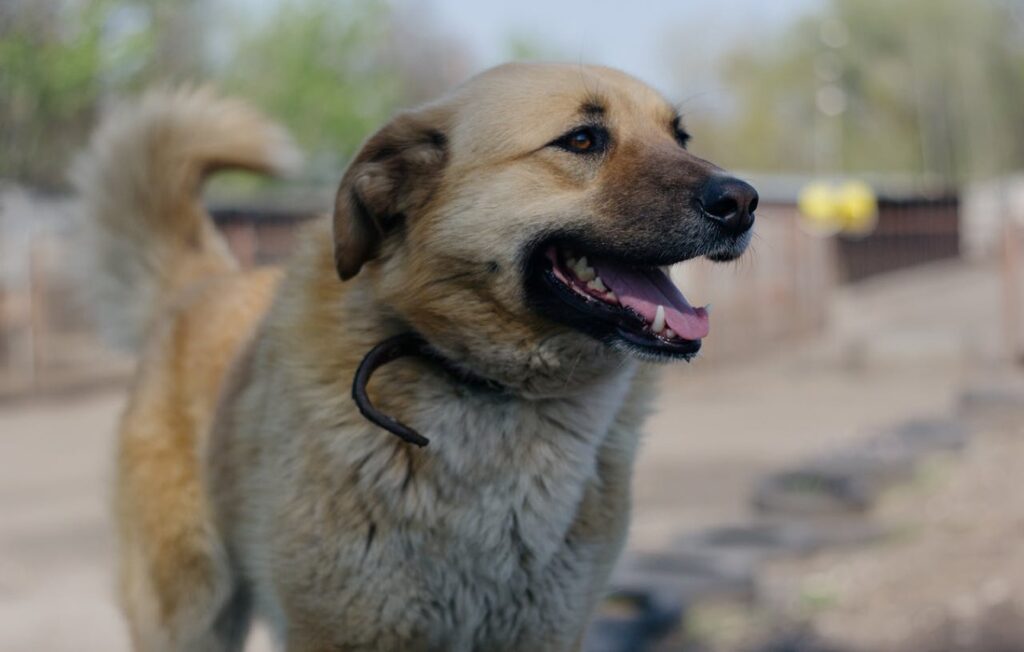

- Routine Vet Visits Schedule annual check-ups to monitor your dog’s overall health. Early intervention can prevent many conditions from worsening. Your vet can perform tests for hereditary issues like hip dysplasia or check for eye problems. Learn more about the benefits of regular vet care in this comprehensive Anatolian Shepherd guide.
- Vaccinations and Parasite Prevention Ensure that your Anatolian is up-to-date on vaccinations for diseases like rabies, distemper, and parvo. Use vet-approved flea, tick, and heartworm preventatives to shield them from common parasites.
- Proper Nutrition Feed your Anatolian a balanced diet designed for large breeds to support their growing joints and overall fitness. Avoid feeding them table scraps or low-quality food to minimize unnecessary weight gain.
- Oral Care Dental hygiene often gets overlooked but plays a significant role in a dog’s health. Regular brushing and dental treats can prevent periodontal disease.
- Grooming Schedule Regular grooming is more than keeping your Anatolian looking its best. It’s also a chance to check for any abnormalities, like lumps, skin irritation, or external parasites. Keep their ears clean to avoid infections, especially if they spend a lot of time outdoors.
- Physical Activity Exercise helps maintain muscle tone and keep your dog’s joints flexible. At the same time, avoid overexertion, particularly in puppies, as their bones are still developing. Short, controlled walks or play sessions are ideal.
- Screen for High-Risk Health Issues Genetic testing or breed-specific screenings can identify hereditary concerns early on. This could give you the chance to address potential problems before they impact your Anatolian’s well-being. Visit this resource for more preventive tips.
Preventive care isn’t just about keeping problems at bay—it’s about ensuring your Anatolian Shepherd has every opportunity to enjoy a long, comfortable, and active life.
Suitability for Ownership
The Anatolian Shepherd Dog is a powerful and independent breed known for its unmatched guardian instincts. However, they aren’t the right fit for every household. Understanding their nature and requirements is key to determining whether they align with your lifestyle. This section explores their compatibility with families, other pets, and the ideal scenarios for owning this dynamic breed.
Are Anatolian Shepherds Good Pets?
Anatolian Shepherds can make excellent pets for the right owner. Their loyalty, intelligence, and drive to protect make them beloved companions for certain families. But are they a good fit for everyone? Let’s break it down.
- Families with Older Children: Anatolian Shepherds are protective, especially with their human “flock.” They tend to do very well with older children who understand how to interact respectfully with a large dog. Young children may not be ideal since Anatolians can accidentally knock them over due to their size. According to The AKC’s Anatolian Shepherd profile, this breed’s calm demeanor allows them to bond naturally with responsible kids.
- Compatibility with Other Pets: Their guarding tendencies mean they are naturally dominant, which can create conflicts with other dogs or pets, especially if introductions are mishandled. Early socialization is essential to help Anatolians learn to coexist with other animals. In homes with smaller pets, they may display protective, but not predatory, behavior as long as they are properly trained.
- Strangers in the Home: These dogs are naturally wary of strangers, which can be both a strength and a challenge. They will need careful introductions to guests and consistent training to distinguish between welcome visitors and potential threats.
Their temperament shines in a patient, experienced household that prioritizes consistent boundaries and routine. First-time dog owners or those used to highly sociable, easygoing breeds may find the Anatolian Shepherd’s independent streak difficult to handle. For more insights into their behavior, check out this thorough breed overview from The Spruce Pets.
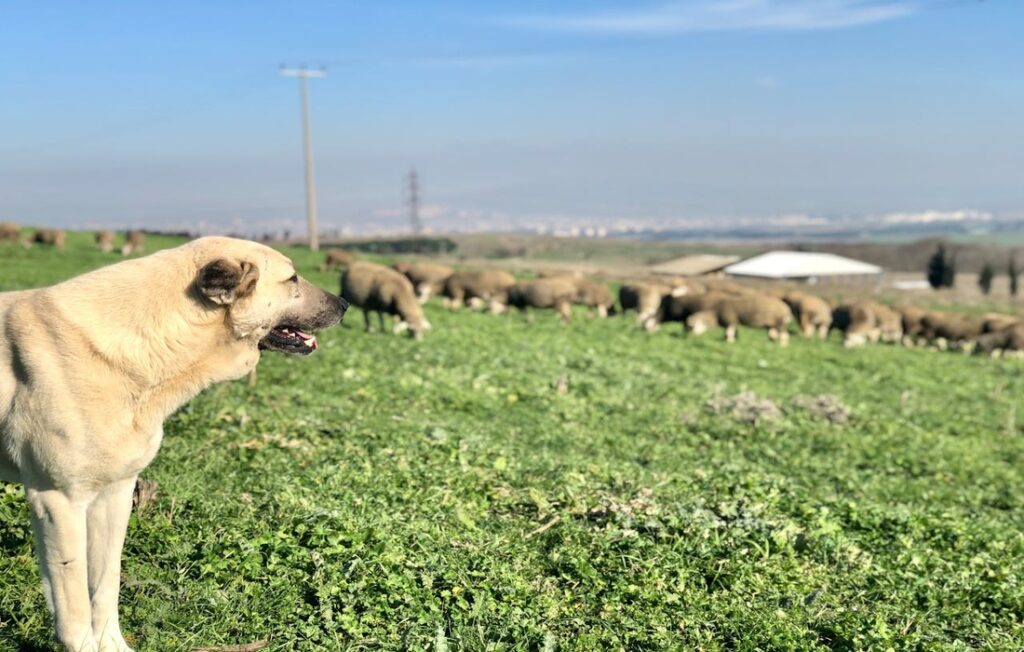

Best Ownership Scenarios
To truly thrive, Anatolian Shepherd Dogs require a specific living environment and an owner who understands their needs. Here’s what makes the ideal home for this breed:
- Homes with Large Outdoor Spaces: Anatolians are designed for wide-open spaces and require ample room to move. A securely fenced yard or a rural setting with plenty of land is ideal. This is not an apartment dog.
- Experienced Dog Handlers: These dogs are independent thinkers. An owner with prior experience handling strong-willed breeds will feel more confident managing their training and behavior. Consistency and patience go a long way.
- Working Roles: Due to their specialized nature as livestock guardians, Anatolians excel in homes where they have a job to do, such as protecting animals or large properties. They are happiest when they feel needed and engaged.
- Households with Predictable Routines: Anatolian Shepherds thrive on routine. Providing regular feeding times, consistent training, and clear expectations helps keep them centered. Chaos or constant changes in the household may confuse or stress them.
For more guidance on determining if this breed suits your lifestyle, explore information shared by Dog Pack’s Anatolian Shepherd guide, which highlights key ownership considerations.
Owning an Anatolian Shepherd is a commitment requiring space, effort, and knowledge. For those up to the challenge, the reward is a steadfast, loyal companion ready to protect your family and home with unmatched dedication.
Quick Look: Anatolian Shepherd Dog Facts
The Anatolian Shepherd Dog, a majestic and powerful breed, is celebrated for its unwavering guarding instinct, intelligence, and adaptability. Originating from Turkey, this breed has been a vital livestock guardian for centuries, appreciated for its dedication and ability to fend off predators. Before diving into the details of their care, training, and history, let’s take a quick glance at the stats that make this breed unique.
Summary Table
Below is a concise overview of key Anatolian Shepherd Dog facts:
| Trait | Description |
|---|---|
| Size | Large; males: 29-31 inches, 110-150 lbs; females: 27-30 inches, 90-130 lbs. |
| Lifespan | 11-13 years |
| Coat Type | Dense double coat; can be short or rough, depending on breeding. |
| Energy Requirements | Moderate; requires daily moderate activity and mental stimulation. |
| Temperament | Loyal, independent, protective, and intelligent. |
The Anatolian Shepherd is a breed that blends strength with elegance, offering a unique mix of independence and unwavering loyalty. For anyone considering bringing one into their lives, this summary paints a clear picture of what to expect. To dive deeper into their traits, check out this comprehensive breed guide.
Practical Tips for Living with an Anatolian Shepherd
Living with an Anatolian Shepherd is an adventure in itself. They are fiercely loyal and independent, but their unique traits require tailored care and attention. Below, I’ll share practical tips to make life with this remarkable breed a fulfilling experience, broken down into essential areas like training and daily routines.
Training and Obedience
Training is a cornerstone of living harmoniously with an Anatolian Shepherd. These dogs are smart but also independent thinkers, so you need a strategy that combines firmness with consistency.
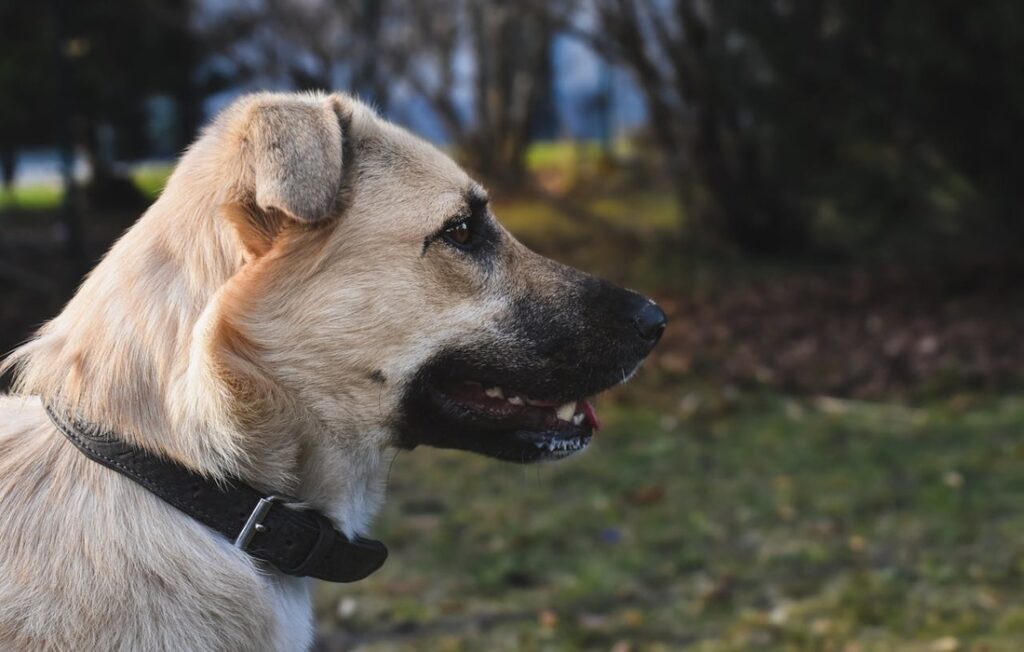

Here’s how to get started:
- Start Early: Begin training while they’re still puppies. Introducing basic commands like “sit,” “stay,” and “come” at an early stage sets a solid foundation.
- Respect Training Over Obedience: It’s not just about teaching commands; it’s about earning their respect. They need to trust you as their leader. More on this approach can be found in Anatolian Shepherd – Sensible Dog Training.
- Positive Reinforcement: Use treats and praise to reward good behavior. Anatolians respond well to encouragement rather than punitive measures.
- Short, Consistent Sessions: Keep training sessions brief—around 10 minutes each—to match their attention span. Repetition and consistency go a long way.
- Socialize as Much as Possible: They can be wary of strangers, so exposing them to new people and environments can lessen overprotective tendencies.
- Secure Boundaries: They’re strong-willed and might take advantage of perceived weaknesses in commands. Always be firm but fair.
Using these techniques, you can harness their natural intelligence and create a balanced dynamic that respects their instincts and your authority. For more detailed insights, check out How to Train an Anatolian Shepherd Dog.
Daily Routine and Environment
Anatolian Shepherds thrive in environments that align with their working-dog heritage. These aren’t couch potatoes—they need purposeful activities and the right setting.
Ideal Daily Routine
Here’s what an average day might look like for your Anatolian:
- Morning Exercise: A brisk walk or jog lasting 30–40 minutes to burn off energy.
- Job or Responsibility: Let them “guard” a yard, house, or even a specific object. Anatolians are happiest when they feel they have a role.
- Mental Stimulation: Puzzle toys, basic training drills, or teaching new commands to keep them mentally sharp.
- Midday Break: Offer a cool-down period indoors or in shaded outdoor spaces. Hydration is crucial, especially in warm weather.
- Evening Wind-Down: Another walk or play session, though this can be lighter than their morning routine.
Creating the Perfect Environment
These are not dogs built for apartments or cramped spaces. If you’re considering bringing one home, here’s what their environment should include:
- Space to Roam: A securely fenced yard is essential. Unsecured areas can trigger their wanderlust and guarding instincts, making them prone to roaming.
- Rural/Outdoor Settings: Anatolians are happiest when their environment mimics their original working conditions. Spacious properties or farms are ideal.
- Strong Fencing: A barrier of at least six feet is necessary, as they’re capable jumpers and climbers.
- Quiet Livelihoods: They bond best with owners who lead consistent, relatively calm lifestyles. Too much chaos or noise can make them anxious.
Living with an Anatolian Shepherd means adopting a routine that balances physical activity, mental stimulation, and environmental stability. For more about creating a suitable setup, visit Anatolian Shepherd Complete Guide.
Tailoring their environment and daily routine to their needs ensures a well-adjusted and happy Anatolian Shepherd—a guardian who thrives under your care.
Final Thoughts
The Anatolian Shepherd Dog is a powerful, loyal, and highly intelligent breed that thrives when matched with the right owner and environment. Their ancient role as guardians is still evident in their instincts, making them steadfast protectors of both livestock and families. However, their size, independence, and territorial nature can be challenging for first-time dog owners or those living in urban areas.
For anyone considering an Anatolian Shepherd, understanding their needs is key. They require early socialization, consistent training, and plenty of space to roam. Whether it’s a rural farm or a large, securely fenced property, these dogs are happiest with a job to do and people they trust. Owning one is a commitment, but the reward—a loyal companion with unmatched protective instincts—is worth it.
If you’ve been drawn to this breed’s history, traits, and purpose, take the next step: reach out to a reputable breeder, rescue organization, or trainer to learn more. Are you ready to welcome a guardian like no other into your life? Let their legacy of loyalty enrich yours.


